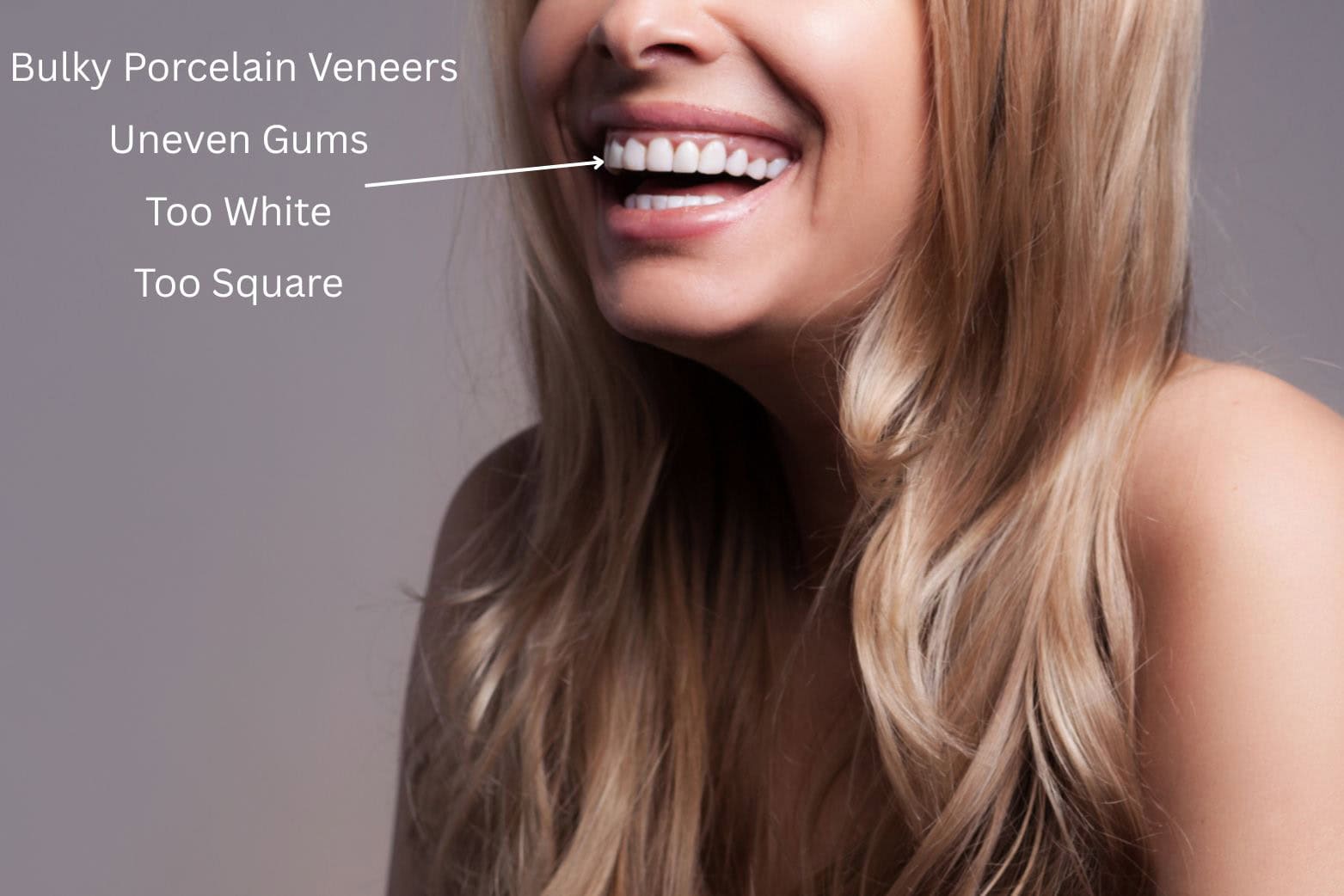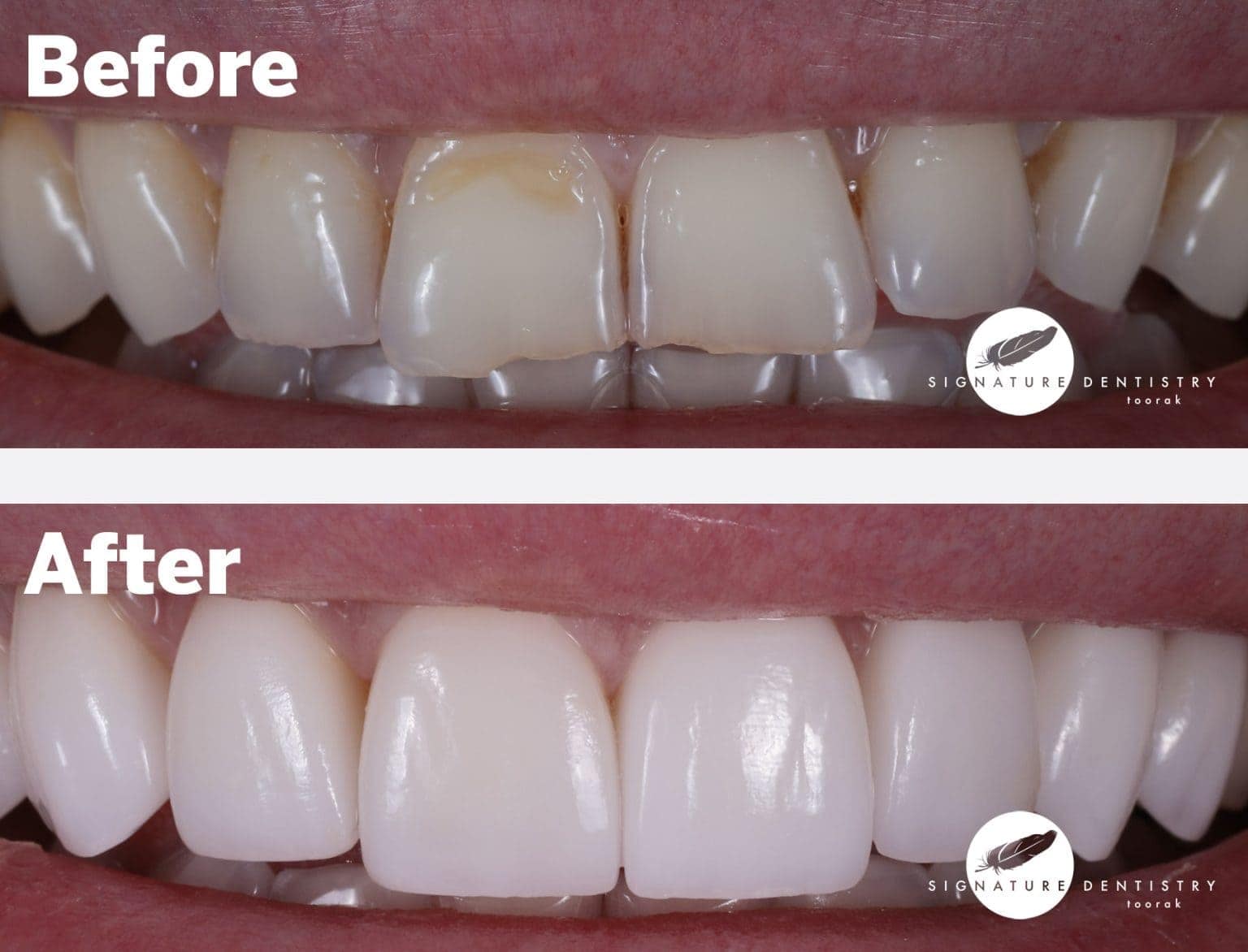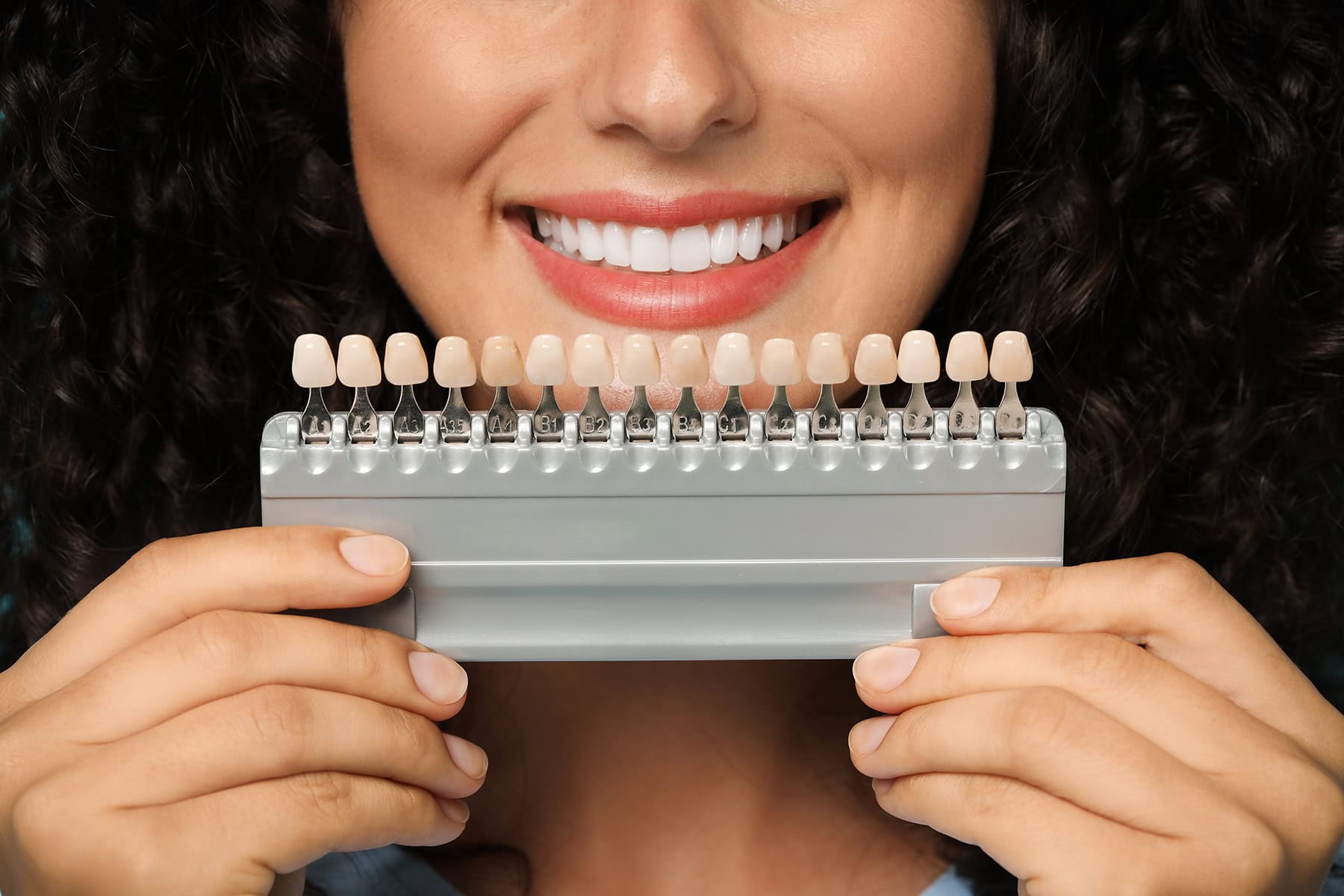Worried about your veneers causing pain or looking unnatural?
Bad veneers can cause discomfort and aesthetic problems.
This guide will help you identify and deal with bad veneers.
Highlights
• Dental veneers are cosmetic solutions that can enhance smiles but quality and proper installation are critical for longevity and comfort.
• Signs of bad veneers include discomfort, unnatural appearance, gaps, and chipping, which can lead to serious oral health issues if not addressed.
• Choosing an experienced local cosmetic dentist and using high-quality materials are essential steps to avoid bad veneer experiences and ensure successful outcomes.

Schedule Your Consultation
Dr. Kasen Somana is an expert cosmetic surgeon in Melbourne
What Are Veneers?
Dental veneers are thin shells designed to cover the front surface of teeth, enhancing their appearance and addressing cosmetic issues such as chips, gaps, and discoloration.
These veneers are typically made from porcelain or composite resin, chosen for their aesthetic qualities and durability.
Veneers come in various types, including traditional porcelain veneers and ultra-thin Lumineers, which bond directly to the tooth surface without requiring extensive preparation.
Each type has its own advantages, and your cosmetic dentist can help you choose the best option based on your specific needs.
The right veneers can provide a natural-looking smile that boosts confidence.
However, not all veneers are of equal quality.
High-quality veneers are vital for a lasting and beautiful smile.
Common Signs of Bad Veneers

Recognizing bad veneers is essential to prevent discomfort and maintain oral health.
Signs of bad veneers include pain, an unnatural appearance, gaps, bleeding gums, visible joinlines or dark lines around the veneer and poor fit.
These issues can result in crooked teeth, uneven edges, mismatched colors, gum disease and other aesthetic problems.
Consult your dentist immediately if you notice any of these signs to address the issue.
Discomfort and Pain
Pain or discomfort from veneers can arise from poorly manufacturing, inadequate bonding, damage to the teeth under the veneer, decay left behind, misaligned veneers that impede your bite or from placement that is too close to the gum line.
Persistent discomfort after veneer placement may suggest improper bonding or enamel damage.
Experiencing discomfort from veneers requires an immediate consultation with a dentist to address any underlying issues.
Unnatural Look
Before: An unnatural look in veneers indicates mismatched color, bulky shape, and a non-natural smile.
Indicators of an unnatural appearance include bulkiness, lack of natural microtexture and poor color matching.
Veneers placed by inexperienced practitioners may result in uneven alignment and aesthetic flaws.
After: Indicators of an unnatural look in veneers include:
• Mismatched color
• Bulky shape
• Non-natural smile
• Bulkiness
• Poor color matching
• Uneven alignment
• Aesthetic flaws from inexperienced practitioners
A natural-looking smile depends on the expertise of a skilled cosmetic dentist.
Gaps and Margins
Poor fit of veneers can leave gaps between the veneer and natural tooth.
These gaps can trap food, making teeth harder to clean and increasing the risk of decay and gum problems.
Properly fitted veneers should not have gaps, ensuring a secure and seamless fit to close gaps.
Chipping and Cracking
Chipped or cracked veneers may indicate improper installation.
Common causes for damaged veneers include low-quality materials or poor craftsmanship in veneer application.
Prompt dental attention is recommended to address any damaged teeth and ensure proper care and treatment.
Have veneers that need to be replaced? Dr. Kasen can help
Causes of Bad Veneers
Selecting the right dentist is crucial as a poor choice can lead to fitting issues and discomfort.
Chipped or cracked veneers may result from low-quality materials or improper installation.
Improper placement of veneers can lead to damage to the underlying tooth structure, resulting in long-term oral health issues.
Veneers that do not match the color of surrounding teeth often indicate poor quality or application.
Poor Craftsmanship
Poor craftsmanship in veneer placement can lead to various complications for many patients, including discomfort and an unnatural appearance.
Ill-fitting veneers can not only cause pain but also fail to enhance the smile adequately.
Proper application and longevity of veneers depend on skilled craftsmanship.
Choosing a qualified and experienced cosmetic dentist, like Dr. Kasen, ensures high-quality veneers and helps avoid potential issues.
Low-Quality Materials
High-quality porcelain veneers are known for their strength, durability, natural shine, texture, and stain resistance.
Composite veneers offer flexibility and quicker results compared to traditional materials.
An unnatural appearance in veneers might result from improper care or low-quality materials.
Inferior materials can lead to reduced durability and an increased chance of damage.
Insufficient Preparation
Removing enamel during the veneer process creates space that allows the veneers to fit naturally and securely.
Poor preparation can lead to excessive filing of the natural tooth structure, causing unnecessary damage.
Insufficient preparation may result in tooth sensitivity or persistent pain, indicating potential issues that require professional evaluation.
Proper tooth preparation ensures that veneers fit well and provide optimal results with minimal preparation.
Risks Associated with Bad Veneers
Bad veneers can lead to serious risks such as increased tooth sensitivity, gum disease, and further complications affecting oral health.
Improperly fitted veneers can increase tooth sensitivity to hot and cold, causing discomfort.
Poorly fitting veneers may irritate the gums, leading to gum recession and gum disease.
Risks associated with bad veneers include tooth decay and long-term complications like bite problems if not addressed promptly.
Tooth Sensitivity
Tooth sensitivity is a common risk associated with veneers.
Bad veneers can expose parts of teeth, causing increased sensitivity to hot and cold foods.
Experiencing sharp or dull pain when consuming certain foods may indicate an issue with the veneers.
Regular dental check-ups help detect issues like wear and tear, improper fit, and potential sensitivity problems with veneers.
Gum Disease
Swelling, redness, and bleeding are common symptoms of gum issues associated with poorly fitted veneers.
Gum disease can harm both veneers and natural teeth, potentially leading to more serious oral health complications.
Gaps created by improperly fitted veneers can contribute to cavities and inflamed gums.
Regular check-ups enable early detection of potential gum and teeth problems, allowing for prompt interventions and highlighting the primary benefits of maintaining dental health and oral health.
Further Complications
Gaps caused by poorly placed veneers can lead to cavities and inflamed gums.
Long-term issues related to poor-quality veneers can include damage to the tooth structure beneath.
Improper veneers can lead to ongoing dental complications and require further procedures.
How to Avoid Bad Veneers
An experienced dentist ensures that veneers are placed correctly and effectively.
Discuss the pros and cons with your dentist before committing to treatment to make an informed decision.
Veneer quality depends on the craftsmanship of the dentist and the materials used.
Understanding the veneer process involves consultation and preparation, which is essential for achieving high-quality results.
Choosing an Experienced Dentist

Getting veneers starts with a consultation with an experienced cosmetic dentist.
They should guide you through the process.
Choosing a dentist with experience in cosmetic dentistry and veneer placement ensures a proper fit, appearance, and healthy teeth.
Select a dental clinic that offers comprehensive care for veneer placement.
Before and after veneer photos of previous patients provide insight into a dentist’s quality of work and can be very informative.
Choosing a qualified dentist ensures proper fitting and long-lasting results.
Understanding the Veneer Process
Dental veneers can fix issues like crooked teeth or discoloration, improving smile appearance and oral health.
Patients considering dental procedures like veneers may wonder about the process involved.
Once you agree on veneer treatment, the dentist takes impressions of your teeth, which are sent to a lab for creating custom made veneers.
During fitting, the dentist checks the fit and color, making adjustments if necessary.
Patients may initially receive temporary veneers to experience the new smile and make adjustments before the final application of permanent veneers.
The fitting process transforms the smile, resulting in a brighter, more polished look.
After bonding, the veneers are cured with a light to secure them in place.
Patients may wear temporary veneers while waiting for their permanent ones.
Follow-up appointments ensure the veneers are working well and address any minor concerns.
Ensuring Quality Materials
High-quality materials like porcelain significantly enhance the durability and natural appearance of veneers.
Porcelain veneers are known for their durability, making them a preferred choice for long-lasting solutions despite their high cost.
Consider lifestyle and individual needs when selecting veneer materials, as these factors influence the choice between porcelain and composite options.
Maintaining Your Veneers
Proper cleaning and care are essential for maintaining healthy teeth and gums with veneers.
Proper aftercare ensures their durability.
While veneers are stain-resistant, they are not completely stain-proof.
Common foods and drinks that can stain veneers include coffee, red wine, and certain berries.
Properly fitted veneers simplify oral health maintenance and help prevent gum irritation and swelling.
Good Oral Hygiene Practices
Using a non-abrasive fluoride toothpaste is recommended to avoid scratching veneers.
Daily oral hygiene practices are essential for maintaining the appearance and longevity of veneers.
Regular brushing and flossing help remove plaque and prevent gum disease, which is crucial for the health of both natural teeth and veneers.
Consistent oral hygiene practices can significantly prolong the lifespan of veneers.
Regular Dental Check-Ups
Dental visits should ideally occur every 6 months to monitor veneer health.
At least twice a year, possibly more based on the dentist’s recommendation, is suggested.
General dentistry services, professional cleanings, and deep teeth cleaning are crucial for removing plaque and tartar, reducing the risk of decay and gum disease.
Avoiding Hard and Stain-Causing Foods
Limiting intake of dark beverages like coffee and red wine helps prevent veneer discoloration.
Stain-causing foods and beverages can significantly impact the appearance of veneers.
Minimizing their consumption helps maintain the aesthetic quality.
Alternatives to Veneers
Various cosmetic treatments are available for enhancing smiles without using veneers.
Options include teeth whitening, orthodontic treatments, and dental bonding.
These alternatives can provide effective solutions for cosmetic needs, addressing issues that veneers might not cover.
Teeth Whitening
Professional teeth whitening is a non-invasive option that improves the color of teeth affected by stains or discoloration.
It enhances the aesthetic appearance of the smile, providing a brighter and more youthful look.
It can be a great alternative for those who seek a dazzling smile without the need for veneers.
Orthodontic Treatments
Invisalign, a clear aligner system, straightens teeth discreetly, offering an alternative to traditional braces.
Orthodontic treatments address issues such as crooked teeth and bite problems, providing a long-term solution for achieving a healthy and beautiful smile without veneers.
Dental Bonding
Composite veneers are made from resin, versatile, and easily shaped, allowing for adjustments to match individual patient needs.
They are great for minor adjustments like fixing small gaps or chips.
However, they may require more frequent touch-ups compared to porcelain veneers.
Summary
In summary, identifying and addressing bad veneers is crucial for maintaining a healthy and beautiful smile.
Common signs of bad veneers include discomfort, an unnatural look, gaps, and tooth chipping, which can lead to further complications such as tooth sensitivity and gum disease.
The causes of bad veneers often stem from poor craftsmanship, low-quality materials, and insufficient preparation.
To avoid these issues, it’s essential to choose an experienced dentist, understand the veneer process, and ensure the use of high-quality materials.
Proper maintenance, including good oral hygiene practices, regular dental check-ups, and avoiding hard and stain-causing foods, is key to the longevity and appearance of your veneers.
If veneers aren’t the right option for you, alternatives such as teeth whitening, orthodontic treatments, and dental bonding can also help you achieve your desired smile.
Remember, a healthy smile is a confident smile.
Take the necessary steps to ensure your veneers or any cosmetic treatments you choose contribute positively to your oral health and overall well-being.
Frequently Asked Questions
What are the common signs of bad veneers?
Bad veneers often present discomfort, an unnatural appearance, visible gaps, and signs of chipping or cracking.
If you notice any of these issues, it may be time to consult a dental professional.
How can I avoid getting bad veneers?
To avoid bad veneers, it is essential to select an experienced dentist, understand the veneer process, and insist on high-quality materials.
This will help ensure a satisfactory outcome.
What are the risks associated with bad veneers?
Bad veneers can lead to increased tooth sensitivity, gum disease, and other complications that negatively impact your oral health.
It’s crucial to choose a reputable professional to avoid these risks.
How should I maintain my veneers?
To maintain your veneers, prioritize good oral hygiene, keep up with regular dental check-ups, and limit hard and stain-causing foods.
This proactive approach will help ensure their longevity and appearance.
Are there alternatives to veneers?
Yes, there are alternatives to veneers, such as teeth whitening, orthodontic treatments, and dental bonding, which can effectively enhance your smile.
Consider these options to achieve the desired aesthetic results.

